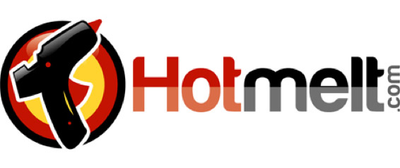Hot Melt Adhesive Demand Continues to Grow
The Hot Melt Adhesives industry has been steadily growing, and according to a recent report by Research and Markets, it will continue to do so steadily through 2020. The report was conducted to analyze the growth of the Global Hot Melt Adhesives industry for the forecast period between 2015-2020 and to determine what factors are behind the growth in the industry, and why certain regions are growing more rapidly than others. Upon completion, Markets and Research found that the market is expected to expand at a moderate compound annual growth rate (CAGR) during this period, and that growth is being driven by technological advancements and innovations in polymer-based adhesives. As of 2015, the Hot Melt Adhesives industry is valued at $5.4 billion.
Hot Melt Adhesives
Hot melt adhesives are industrial strength adhesives that are thermally melted and then allowed to cool in order to achieve their adhesive properties. They are made primarily of one or more polymers and a combination of additives such as resins and pigments that provide different characteristics to various adhesives. Hot melt adhesives are named for their polymer bases, providing different types of hot melt adhesives like ethylene vinyl acetate, polyamide, and polyurethanes for numerous industries and applications, including packaging, product assembly, woodworking, bookbinding, and product labeling.
Market Regions
To view and measure the growth of the industry, the hot melt adhesives market is broken down into three sections: polymer-base, application, and location. There are seven key regions of the Hot Melt Adhesives market, including North America, which comprises 30% of the global market, Western Europe, comprising another 18%, Asia Pacific Excluding Japan (ASEP), Japan, Easter Europe, Latin America, and the Middle East and Africa. Of all these regions, the new report finds Asia-Pacific to be the fastest growing market for hot melt adhesives, mainly because of recent expansions in production capacity and a high demand for end-use products.
Reasons for Global Growth
An increasing need for high-standard performance across all industries and applications has contributed significantly in driving the Hot Melt Adhesives global market. According to the report, which combines data found by analyzing regional trends, polymer-base popularity, and industrial use, the global hot melt adhesives market is expected to grow to $9.64 billion USD by 2020, showing a CAGR of 5.73% over a five year period. One of the main reasons cited in the report is a global shift in popular demand from solvent-based adhesives to hot melt adhesives. There are three main reasons for this shift in popularity:
- Hot melt/polymer-based adhesives reduce, or completely eliminate resilient organic compounds.
- Hot melt/polymer-based adhesives have a longer shelf life than solvent-based adhesives.
- Hot melt/polymer-based adhesives can be disposed of without special instructions or hazardous environmental effects.
Increased demand and consumption of hot melt adhesives has also been attributed to their solvent-free properties. These tend to comply with regulatory authoritative requirements in terms of health, safety, and product quality.
Another significant reason for the increase in demand of polymer-based hot melt adhesives is the increased demand for polyurethane based hot melt adhesives. Polyurethane adhesives are specially formulated for bonding non-porous materials like metal and wood together, making it perfect for applications like shoe making, bookbinding, and product packaging. Polyurethane is low-volatile organic compound, which also makes it popular because it can be used as a raw material in manufacturing hot melt adhesives.
Conclusion
Popularity and demand for hot melt adhesives will continue to grow over the next five years. Demand in these adhesives is growing at a rapid rate in the Asia-Pacific region and across global industries that favor hot melt adhesives for their long shelf life and eco-friendliness. These factors save manufacturers and companies thousands, perhaps millions of dollars in production costs every year, and will continue to gain popularity as businesses around the globe continue to cater to an ever-growing environmentally conscience market.

